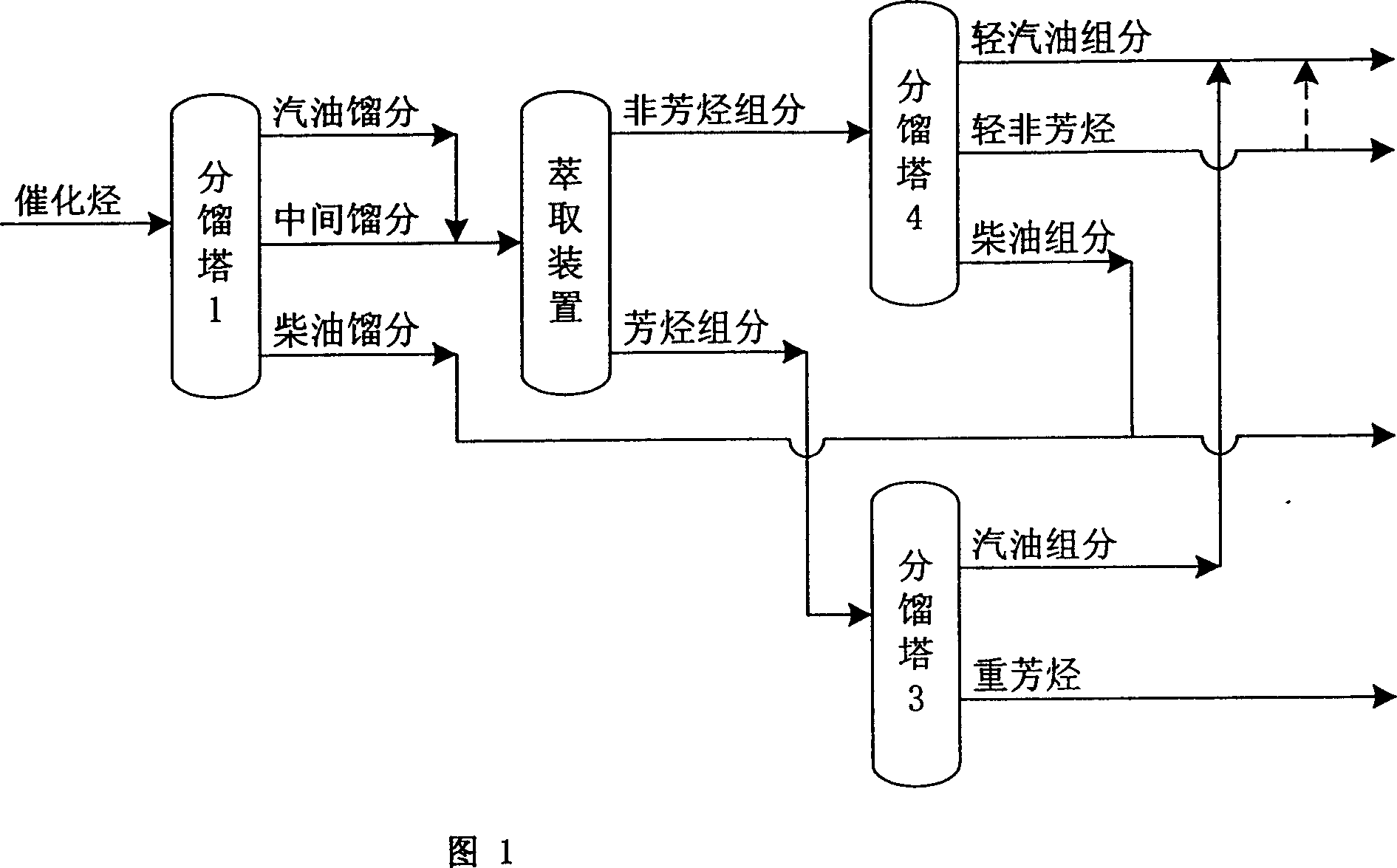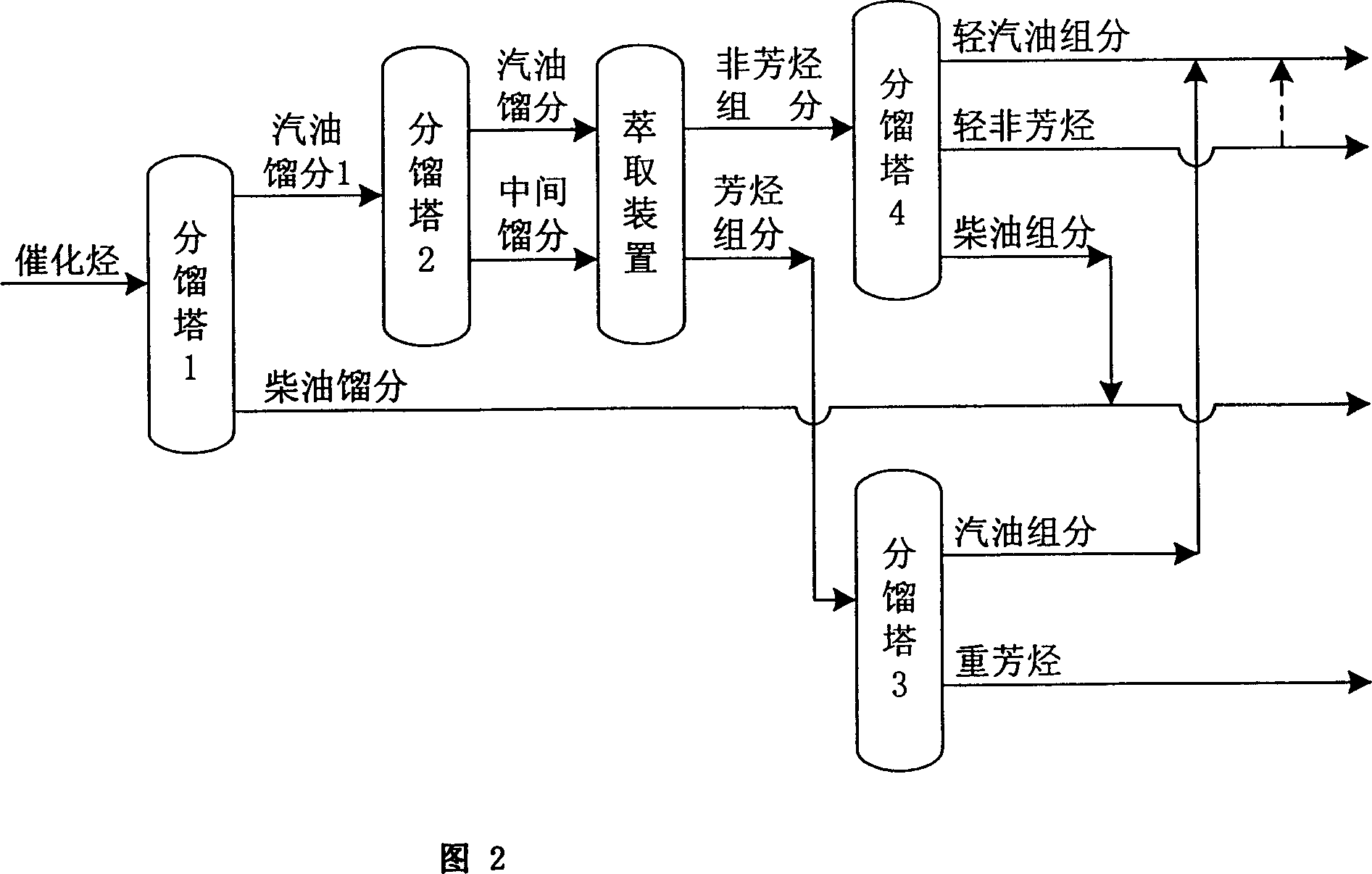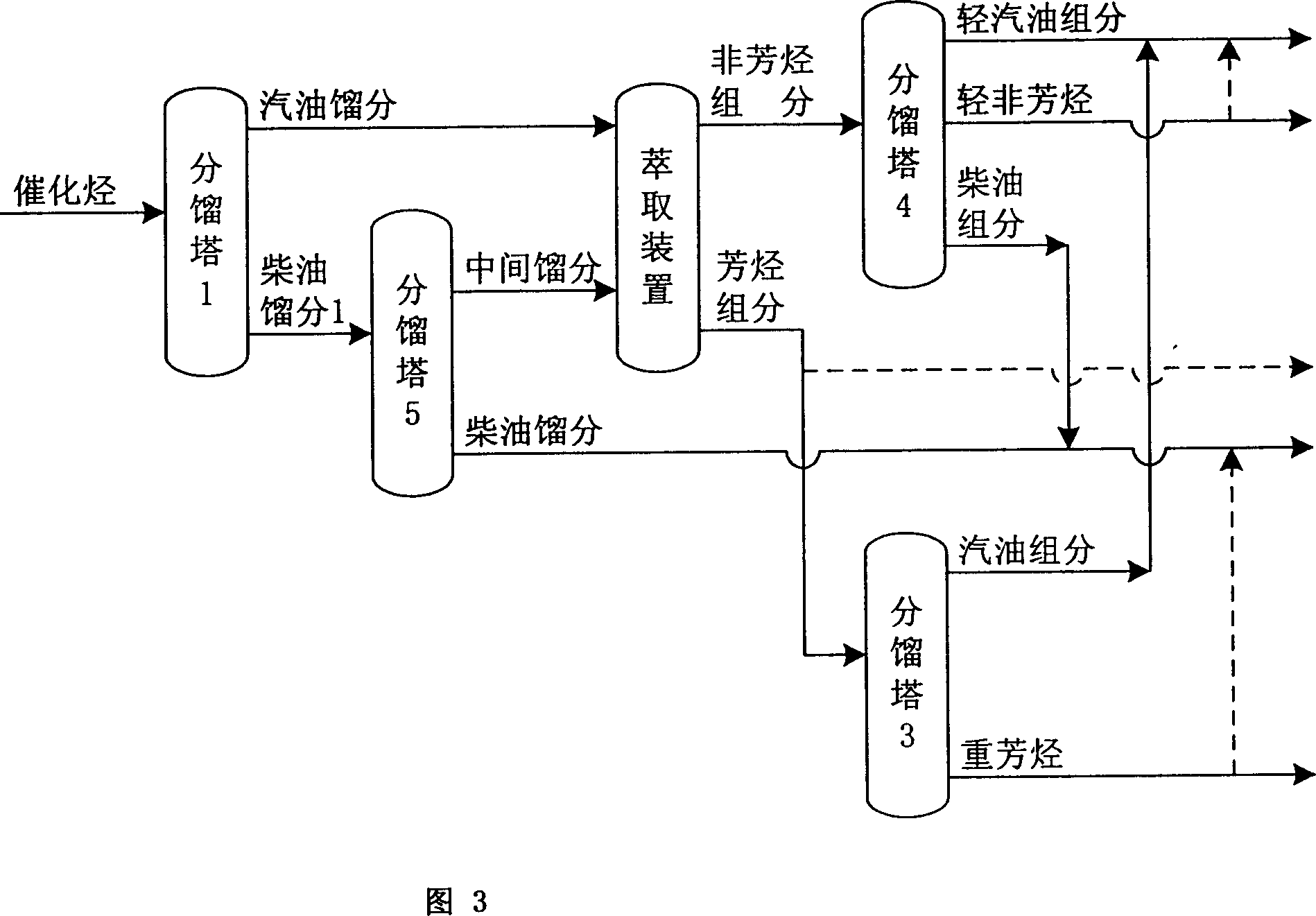Catalytic hydrocarbon recombinant treating method
A treatment method and a technology for catalyzing hydrocarbons, which are applied in the direction of naphtha catalytic reforming, hydrocarbon distillation, and refined hydrocarbon oil, etc., which can solve the problems of high operating costs, limited scale, and large investment, and achieve short construction period and low operating costs , The effect of small construction investment
- Summary
- Abstract
- Description
- Claims
- Application Information
AI Technical Summary
Problems solved by technology
Method used
Image
Examples
Embodiment 1
[0035]As shown in Figure 1, the paraffin-based catalytic raw material and recycled oil are produced under the action of the LCS catalyst produced by Lanzhou Catalyst Factory to produce catalytic hydrocarbons, and the obtained catalytic hydrocarbons are put into fractionation tower 1 for cutting and fractionation. The temperature at the top of fractionation tower 1 is 80°C. The outlet temperature is 240°C, the temperature at the bottom of the tower is 370°C, the pressure at the top of the tower is 0.1MPa, and the pressure at the bottom of the tower is 0.12Mpa; a side draw outlet is added in the middle of the fractionation tower 1 to cut the middle distillate, and the temperature of the side draw outlet is 190°C, the distillation range of the middle distillate is 120-210°C, the obtained middle distillate and the obtained gasoline fraction are pumped into the extraction device for solvent extraction and separation, the solvent used is sulfolane, the extraction temperature is 80°C, ...
Embodiment 2
[0039] Catalytic hydrocarbons are produced by using the catalytic raw material of intermediate base heavy oil and recycled oil under the action of LANET-35 catalyst produced by Lanzhou Catalyst Factory, and the obtained catalytic hydrocarbons are put into fractionation tower 1 for cutting and fractionation. The temperature at the top of fractionation tower 1 is 80°C, and the diesel is exported The temperature is 240°C, the temperature at the bottom of the tower is 370°C, the pressure at the top of the tower is 0.1MPa, and the pressure at the bottom of the tower is 0.12Mpa; add three side draw outlets in the middle of the fractionation tower 1 to cut the middle distillate, from top to bottom three The outlet temperatures of the two side streams are 170, 180, and 190°C in sequence, and the distillation ranges of the middle distillate are 80-120°C, 120-165°C, and 165-220°C respectively. Three identical extraction devices were used for solvent extraction and separation, the solvent...
Embodiment 3
[0043] The catalytic raw material of naphthenic heavy oil and the re-refined oil are produced under the action of LANET-35 catalyst produced by Lanzhou Catalyst Factory to produce catalytic hydrocarbons, and the obtained catalytic hydrocarbons are put into fractionation tower 1 for cutting and fractionation. The temperature at the bottom of the tower is 240°C, the temperature at the bottom of the tower is 370°C, the pressure at the top of the tower is 0.18MPa, and the pressure at the bottom of the tower is 0.25Mpa; add two side draw outlets in the middle of the fractionation tower 1 to cut the middle distillate, two from top to bottom The temperature of the side line extraction outlet is 180 and 190°C in sequence, and the distillation ranges of the middle distillate are 80-165°C and 165-220°C respectively. The device is used for solvent extraction and separation, the solvent used is N-formylmorpholine, the extraction temperature is 85°C, the extraction pressure is 0.4MPa, the s...
PUM
 Login to View More
Login to View More Abstract
Description
Claims
Application Information
 Login to View More
Login to View More - R&D
- Intellectual Property
- Life Sciences
- Materials
- Tech Scout
- Unparalleled Data Quality
- Higher Quality Content
- 60% Fewer Hallucinations
Browse by: Latest US Patents, China's latest patents, Technical Efficacy Thesaurus, Application Domain, Technology Topic, Popular Technical Reports.
© 2025 PatSnap. All rights reserved.Legal|Privacy policy|Modern Slavery Act Transparency Statement|Sitemap|About US| Contact US: help@patsnap.com



